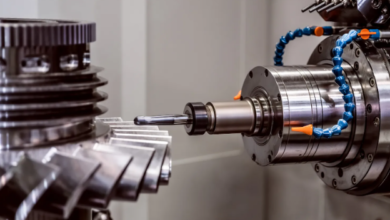
Mutf_In: Sund_Mult_Asse_1y94f32 represents a significant advancement in multi-sensory assembly technology. It employs sophisticated algorithms to optimize operational processes across various sectors. This system enhances human-machine interaction by reducing cognitive load and enabling personalized experiences. Its implications could be profound, yet the full extent of its impact on industries like healthcare and automotive manufacturing remains to be analyzed. The evolving landscape of such technologies invites further exploration of their potential benefits and challenges.
Key Features of Mutf_In: Sund_Mult_Asse_1y94f32
The effectiveness of Mutf_In: Sund_Mult_Asse_1y94f32 can be attributed to its distinctive features that enhance its operational capabilities.
Key benefits include streamlined processes and enhanced adaptability, which significantly contribute to system efficiency.
By integrating advanced algorithms and user-friendly interfaces, this system promotes optimal performance, ensuring that users can operate with greater autonomy and flexibility.
Ultimately, this fosters an environment conducive to innovation and productivity.
Potential Applications Across Industries
While various industries continue to evolve, Mutf_In: Sund_Mult_Asse_1y94f32 presents numerous potential applications that can enhance operational efficiency and innovation.
In healthcare applications, it can streamline data management and improve patient outcomes.
In automotive manufacturing, its capabilities may optimize production processes and reduce waste.
These advancements indicate a promising future for industries seeking to leverage technology for greater freedom and effectiveness.
Impact on Human-Machine Interaction
As advancements in Mutf_In: Sund_Mult_Asse_1y94f32 continue to unfold, their influence on human-machine interaction becomes increasingly significant.
Enhanced interaction design prioritizes user experience by minimizing cognitive load and facilitating intuitive engagement.
Furthermore, incorporating user feedback into system development fosters adaptability and personalization, ultimately leading to more effective collaborations between humans and machines, thereby enriching the overall interaction landscape.
Future Trends in Multi-Sensory Assembly Systems
Emerging technologies are poised to redefine multi-sensory assembly systems, enhancing their capabilities to integrate various sensory inputs for improved operational efficiency.
Virtual reality will play a crucial role, allowing users to interact with these systems in immersive environments.
Consequently, advancements in sensory integration will facilitate real-time feedback, thereby optimizing processes and empowering individuals to achieve greater freedom and flexibility in assembly tasks.
Conclusion
In conclusion, Mutf_In: Sund_Mult_Asse_1y94f32 exemplifies a paradigm shift in multi-sensory assembly systems, juxtaposing efficiency with user-centric design. While it streamlines complex workflows, it simultaneously fosters a personalized user experience, bridging the gap between technology and human interaction. As industries embrace this advanced system, the potential for enhanced productivity is tempered by the need for adaptability in evolving operational landscapes. Thus, the balance between innovation and practicality will define the future trajectory of assembly technologies.




